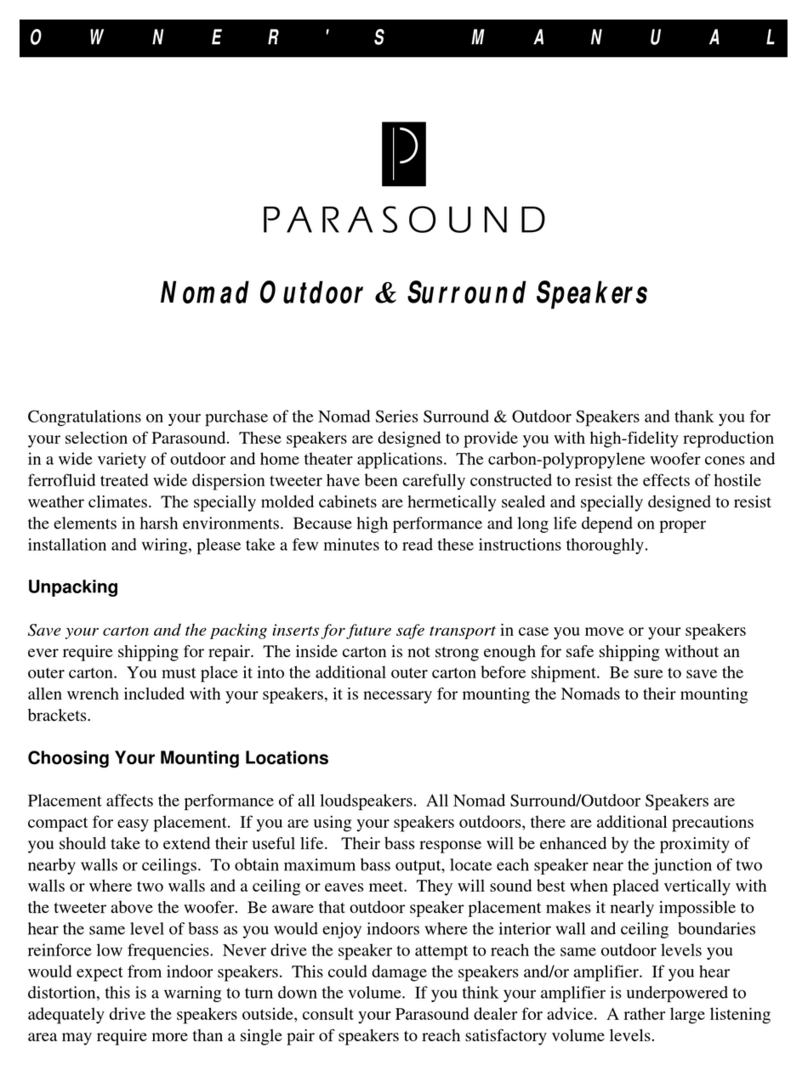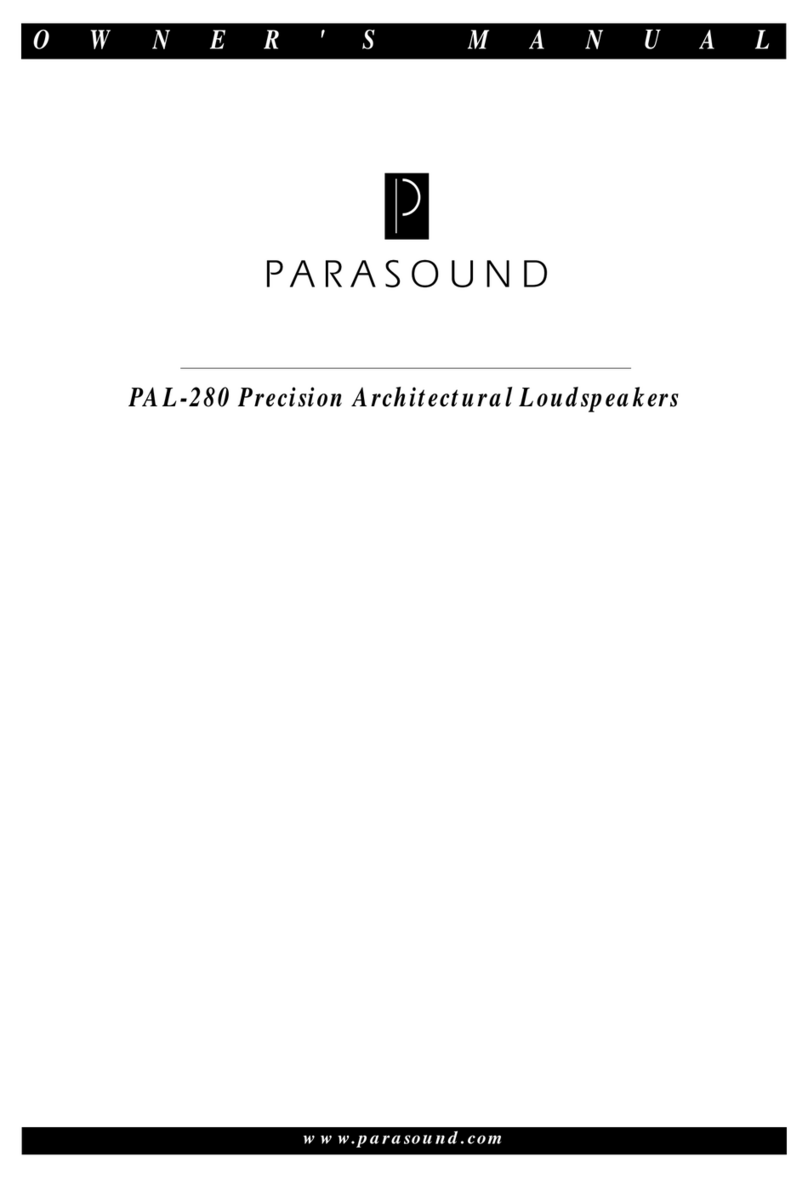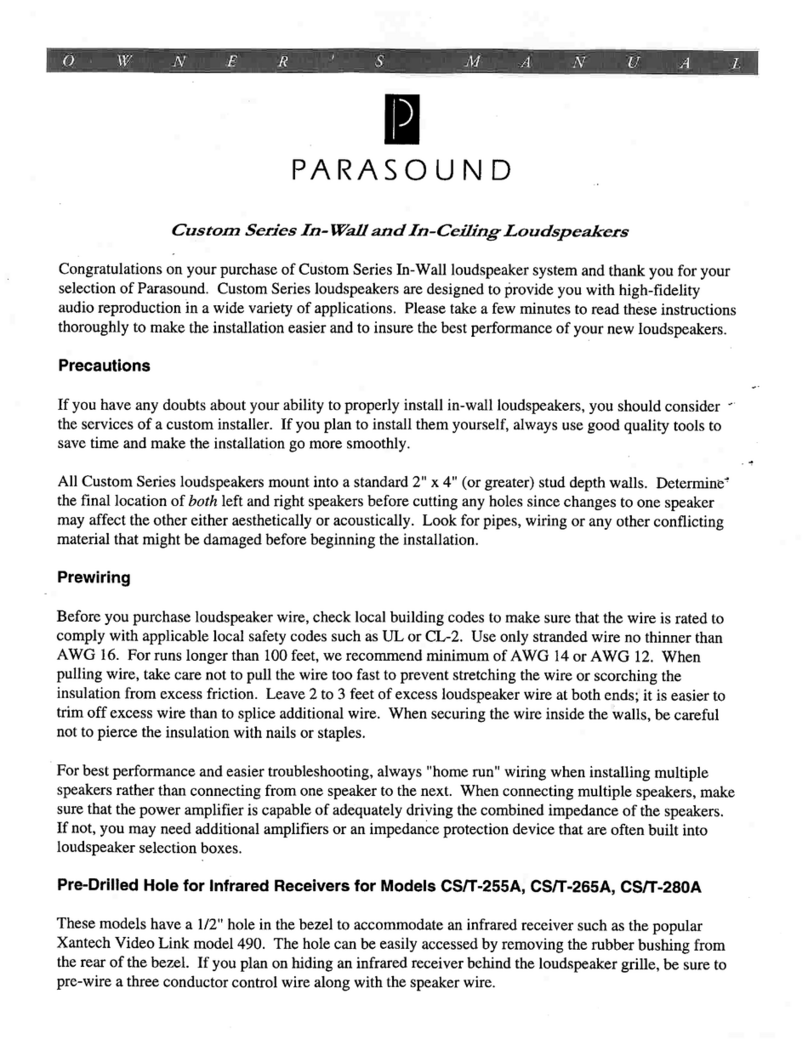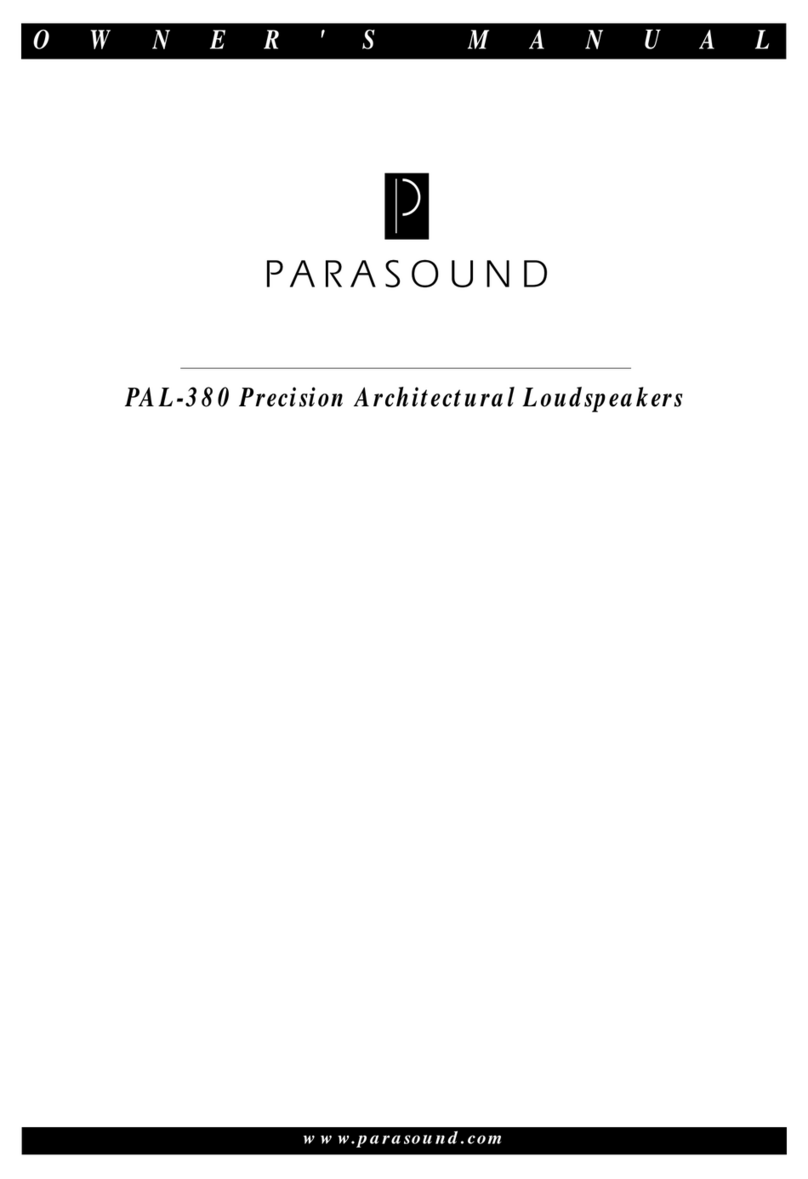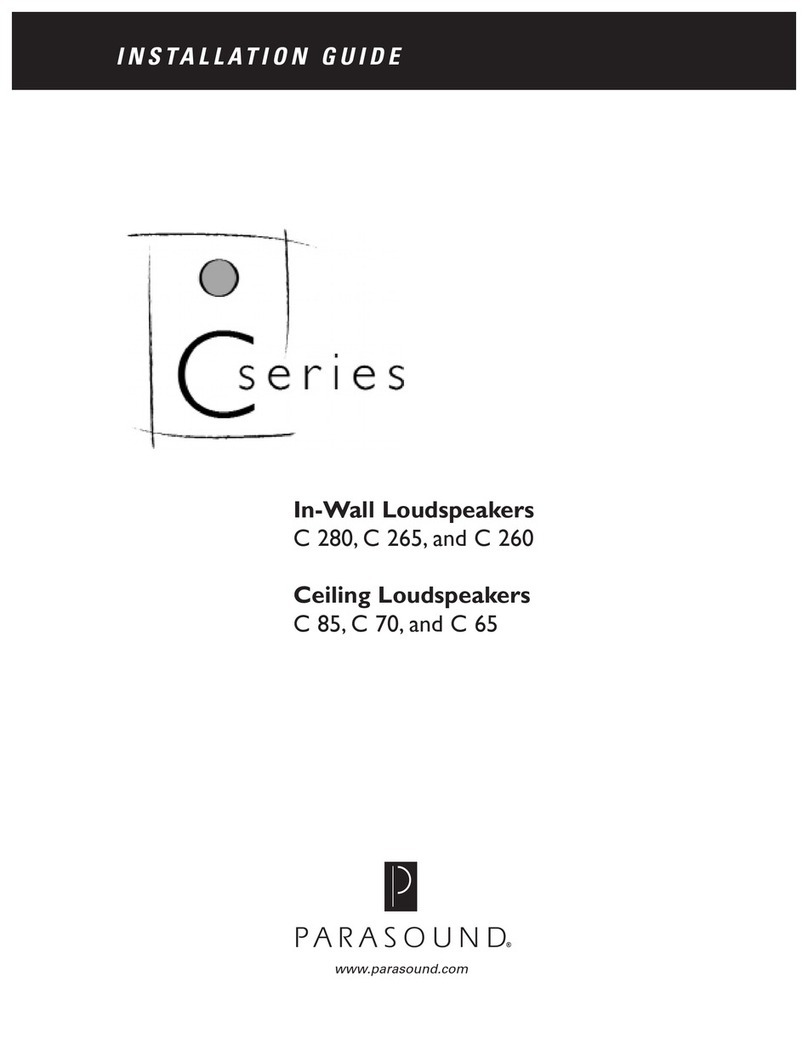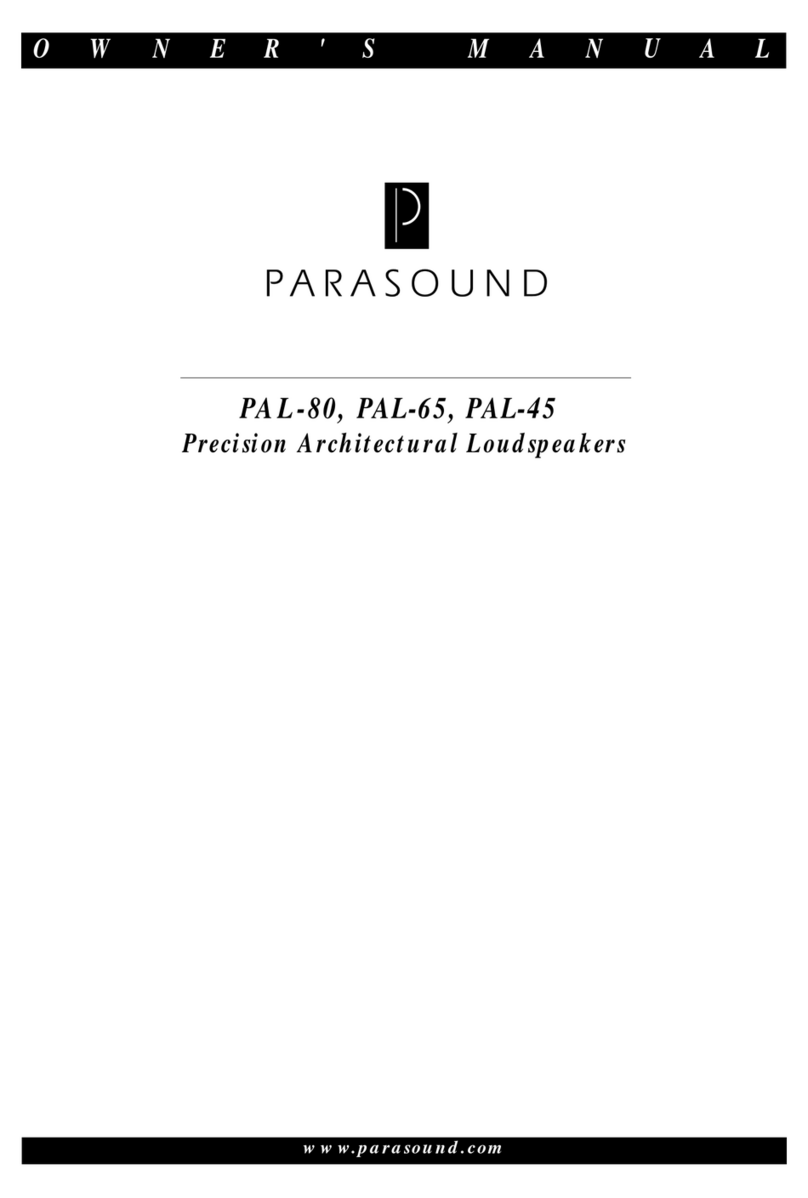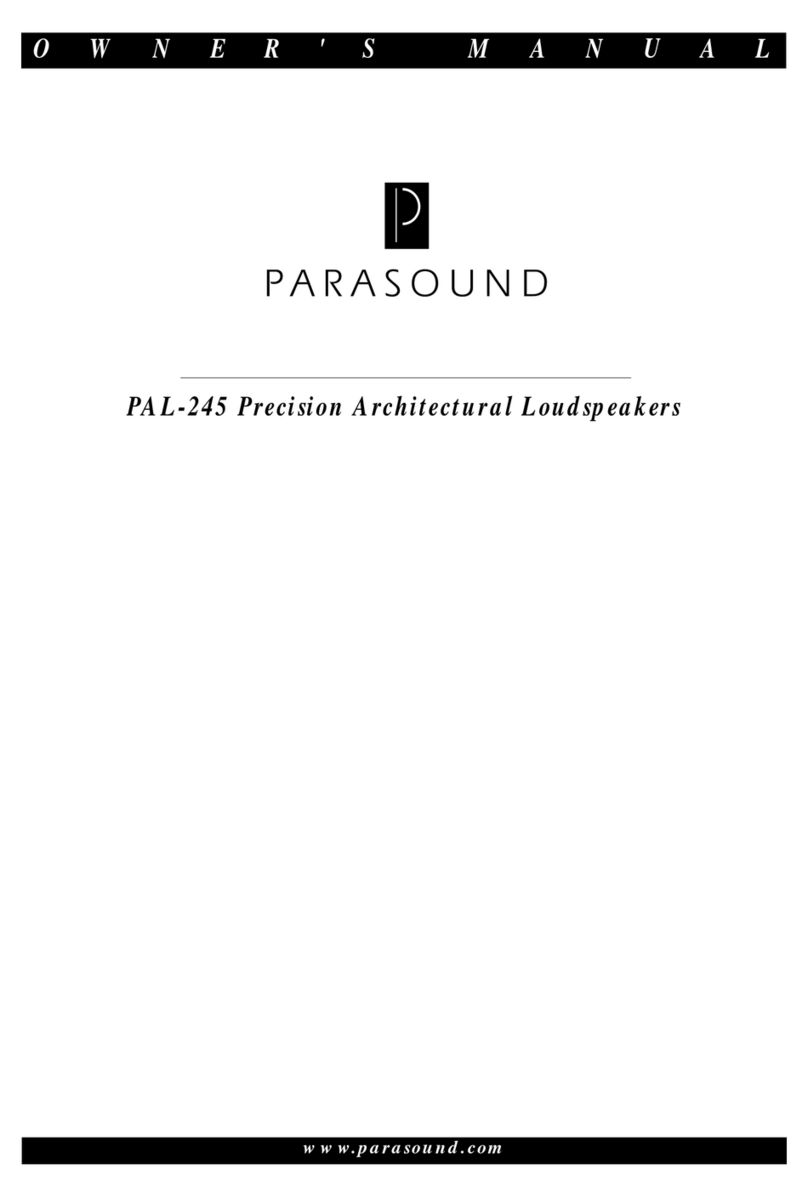
-2-
Preparing the Wall or Ceiling Cutout
Confirm that there is at least 1 1/2" of clearance between each edge of the planned cutout and adjacent
studs or joints. Fasten the supplied cardboard template to the wall or ceiling with tape or thumbtacks.
Check again for equal distance of both speakers from the ceiling or floor. Use a level or the inwall
template's self levelling feature to insure that the template is fastened correctly. Next, trace around the
perimeter of the template. Before making the final cutout, make a small 6 inch "test cutout" in the center
of the pencilled outline. Reach inside the test hole to verify that there are no obstructions in the way of
your planned cutout.
Before cutting the hole, first score the drywall with a razor knife. Next, use a keyhole saw to complete
the cut. Remove remaining debris from the edge of the hole. Insert the loudspeaker without the
mounting bracket into the cutout to make sure it fits easily without forcing.
Secure the speaker wire to a stud near the cutout so its weight will not tug on the terminals of the
speaker after it is connected. This will also keep the wire from dropping behind the wall before you have
a chance to connect it. Before connecting the wire to the terminals, make sure the speaker wire runs
through, not around, the speaker’s metal mounting bracket.
We recommend that you add a “blanket” of sound absorbing material behind the woofer to reduce sound
transmission into the adjoining room and to prevent reflections bouncing back against the woofer cone.
To further isolate sound from the adjoining room and improve bass response, you may consider
installing a separate cabinet between the studs.
Installing Custom Series Loudspeakers in Walls and Ceilings
Remove the grille gently pulling the grille frame away from the frame. Set the grille aside for now.
Parasound Custom Series loudspeakers employ mounting “swing-arms”
(mounting dogs) that will automatically swing out when the mounting
screws are first turned clockwise (see drawing). After they swing out,
the arms will then clamp against the drywall from behind the wall.
Tighten all the bolts evenly. This securely clamps the wall between
the speaker’s molded frame in front and metal bracket behind.
Avoid using excessive force to prevent deforming the drywall or
cracking the speaker's mounting frame.
Any sound leakage from behind the molded frame can be blocked
with foam weather-stripping directly behind the plastic speaker bezel.
Treble Adjustment for Models CS/T-255A, CS/T-265A, CS/T-280A
If you are installing your Custom Series loudspeakers in a "live" room or mounting them on-axis to the
listening position, it may be desirable to adjust the output level of the tweeter to reduce brightness.
Certain Parasound Custom Series loudspeakers come equipped with a treble adjustment control that
allows you to attenuate the tweeter level from 0 dB (flat) to -3 dB or - 6 dB. Once you have installed the
loudspeakers, use a slotted screwdriver or small coin to adjust the treble level as necessary.
